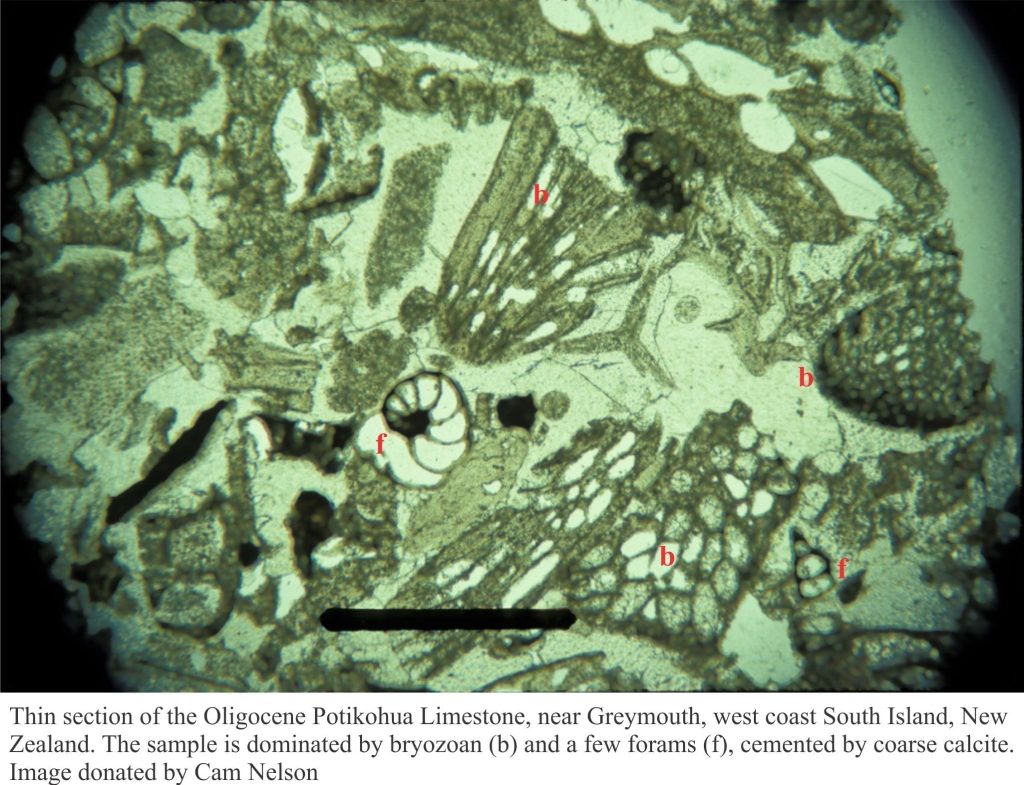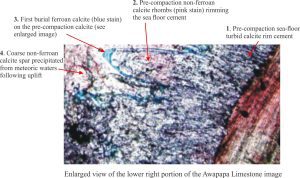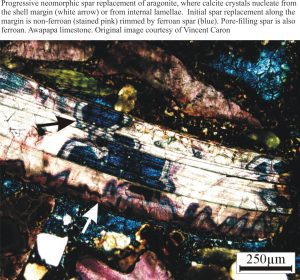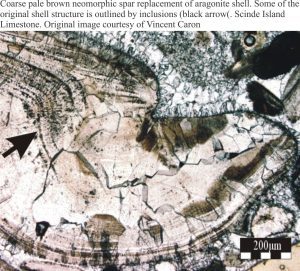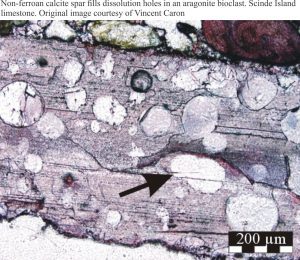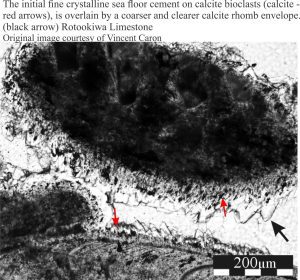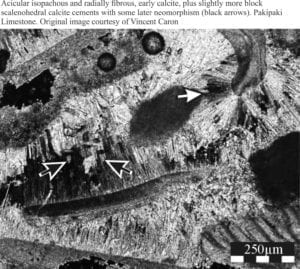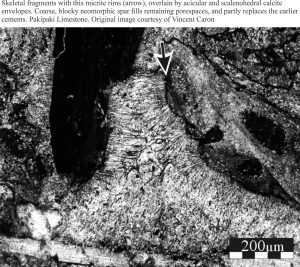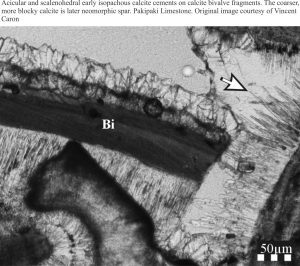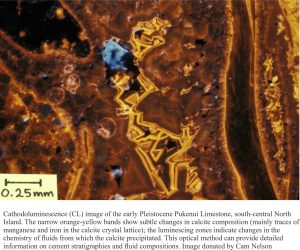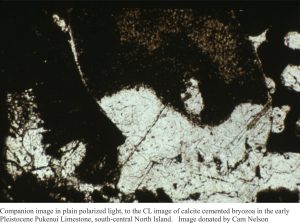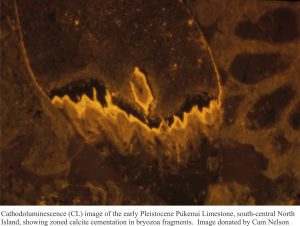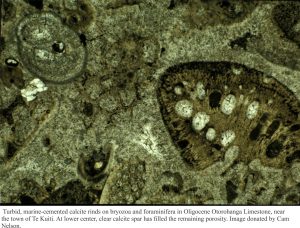This is the companion Atlas to the Cool-water carbonates – outcrop images.
New Zealand cool-water carbonates are predominantly bioclastic, consisting of fauna like bivalves, calcareous bryozoa, barnacles, echinoderms, and flora such as rhodoliths (calcareous algae that encrust rock fragments and shells). This is particularly the case on shelves with little terrigenous sediment input, such that there is a diverse epifauna. Good examples of this setting occur around New Zealand. There is no evidence in any of the Oligocene through Pleistocene stratigraphy for aragonite-producing algae like Halimeda and Penicillus.
However there is a range of bioclast compositions, ranging from low- to high magnesian calcites and aragonite, The bioclast compositional variation has a significant impact on cement types (micrite and rhomohedral calcite envelopes) calcite spar, and neomorphic replacement by calcite of original bioclast aragonite. Like cements in more tropical realms, the cement paragenesis in cool-water carbonates reflects complex histories of fluid flow and evolving fluid chemistry through sea floor cementation, burial, uplift and ingress of meteoric water. Some useful references describing the paragenesis of Pliocene cool-water carbonates from the east coast of North Island (Te Aute Group) are given below.
Contributors:
Vincent Caron is a lecturer in geology and researcher in carbonates based at the Université de Picardie Jules Verne in Amiens, France. He is also a member of the Basins Resources Reservoirs research group. Most of the images presented here on Te Aute limestones formed part of his PhD research at Waikato University. A short list of his publications on the Te Aute is shown below.
Cam Nelson, is one of the original adherents of the Cool Water Carbonate paradigm, who set the scene with his studies of the Oligocene Te Kuiti Group. Cam is an Emeritus Professor at Waikato University.
CS Nelson, PR Winefield, SD Hood, V. Caron, A Pallentine, and PJJ Kamp. 2003. Pliocene Te Aute limestones: Expanding concepts for cool-water shelf carbonates. New Zealand Journal of Geology and Geophysics, 46, 407-424.
V Caron, CS Nelson, and PJJ Kamp. 2004. Contrasting carbonate depositional systems for Pliocene cool-water limestones cropping out in central Hawke’s Bay, New Zealand. New Zealand Journal of Geology and Geophysics, 47, 697-717.
B.D. Ricketts , V Caron & C.S. Campbell 2004. A fluid flow perspective on the diagenesis of Te
Aute limestones. New Zealand Journal of Geology and Geophysics, 47:4, 823-838
V Caron and CS Nelson. 2009. Diversity of neomorphic fabrics in New Zealand Plio-Pleistocene limestones: Insights into aragonite alteration pathways and controls. Journal of Sedimentary Research, v. 79, p. 226-246.
The images:
Pliocene Te Aute Group, Hawkes Bay, New Zealand
Pleistocene Pukenui Limestone, southern North Island, in plain polarized light and cathodoluminescence.
Oligocene Potikohua Limestone near Greymouth, South Island
Oligocene Orahiri and Otorohanga limestones, Te Kuiti Group. Courtesy of Cam Nelson

